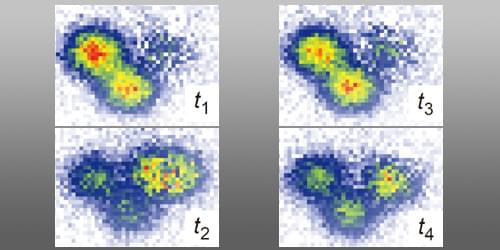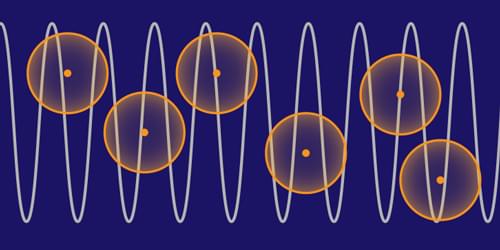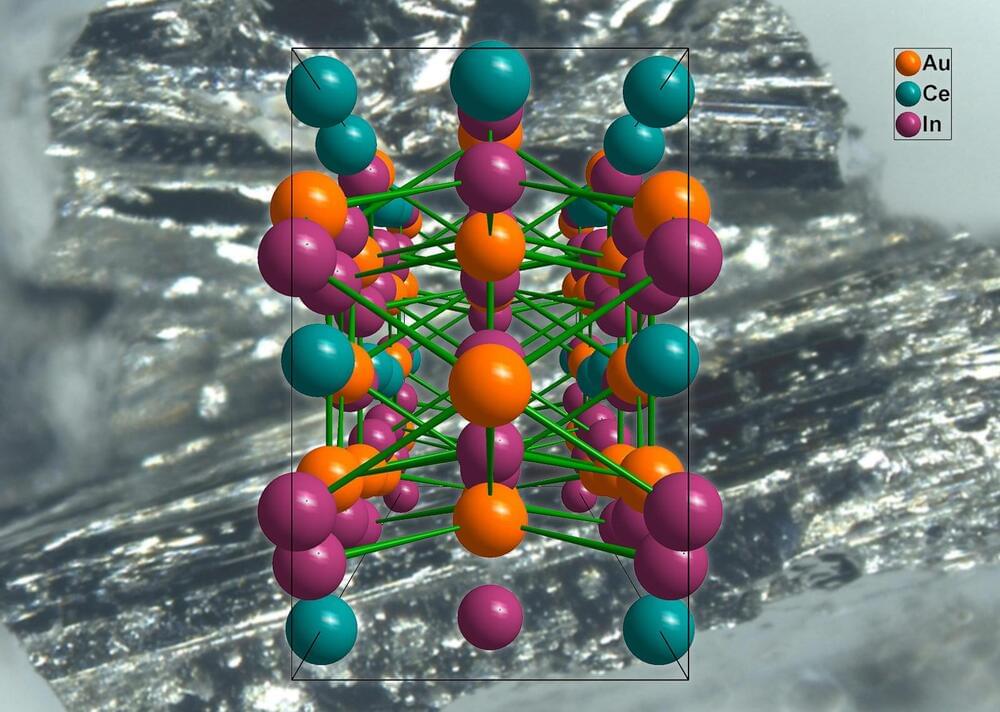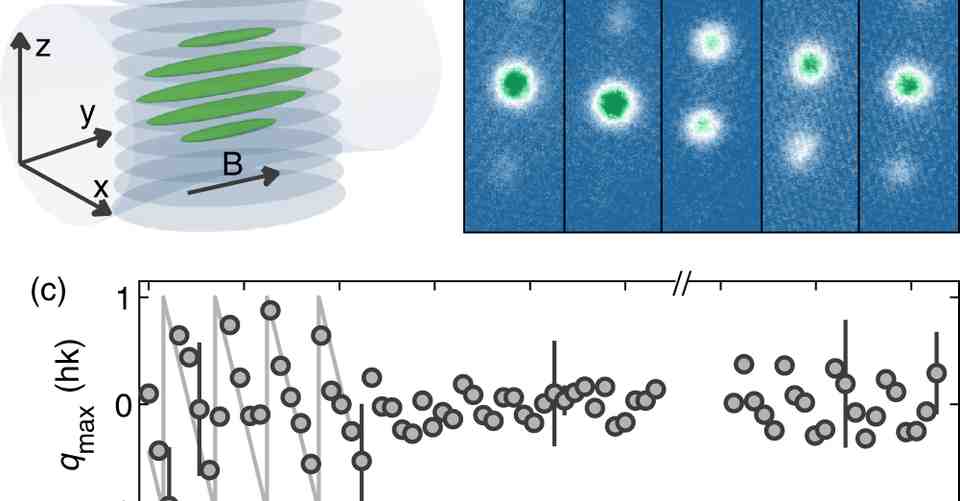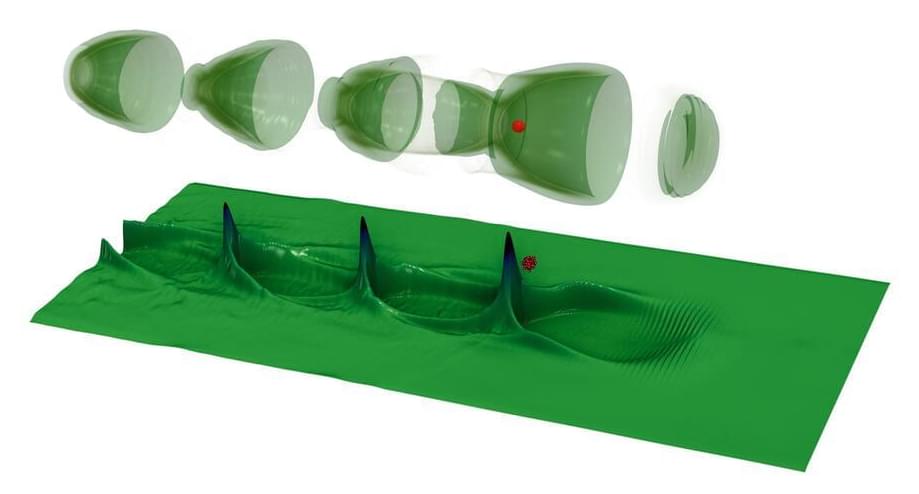Researchers produce analogues of hard-to-study quantum phenomena in a gas of strontium atoms near absolute zero.
Recently, researchers have begun using ultracold atomic gases to simulate phenomena that are difficult to study in their natural environments. Using electromagnetic fields, for example, they can orchestrate interatomic interactions that are analogous to interactions in condensed-matter systems, which they can then study with greater experimental control than the real examples allow. Now David Wilkowski of Nanyang Technological University in Singapore and colleagues use an ultracold atomic gas to simulate a condensed-matter system’s spin dynamics [1].
Wilkowski’s team cools a gas of strontium-87 atoms to 30 nK. Then, using three convergent laser beams, they drive the gas through various transitions until the atoms populate two so-called dark states, in which quantum mechanics forbids the atoms from undergoing spontaneous emission.
